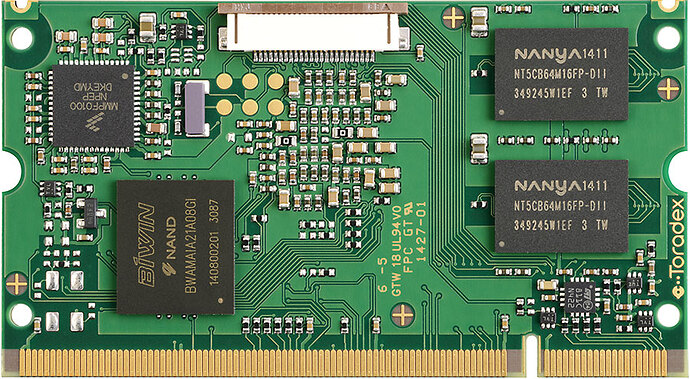Hello to TORADEX community,
Colibri iMX6DL 512MB V1.1A HW design considerations, as suggested by heading (I read a bit about the iMX6DL module, so I am curious to find answers on my following questions)!
The module I am talking about is: NXP/Freescale i.MX6 Computer on Module - Colibri iMX6 - Übersicht
The pictures representing the module are:
The questions:
[1] Connector X1 (200 pins): does it follow any known standards, or it is TORADEX proprietary (if proprietary, please, explain in details why such a layout)?
[2] Connector X2: Does Colibri iMX6 module support HDMI 1.4a?
[3] Using Colibri Evaluation Board (CEB): Colibri Evaluation Board | Toradex Developer Center , does it support all 3 GFX interfaces: VGA, DVI and LVDS (display attached) at once?
[4] It seems that on CEB LVDS is supported by RGB I/F to LVDS external silicon conversion (since internal LVDS I/F is not out on X1)?
[5] It seems that X1 connector does not support SATA and PCIe, since it is too “short” (too few pins) for these controllers’ pins to be put out from iMX6 SoC?
[6] Does TORADEX plan for 8GB flash + 2GB DDR3 down for future Colibri iMX6 module creations, or these could be customized on the present module?
Thank you,
nobody

